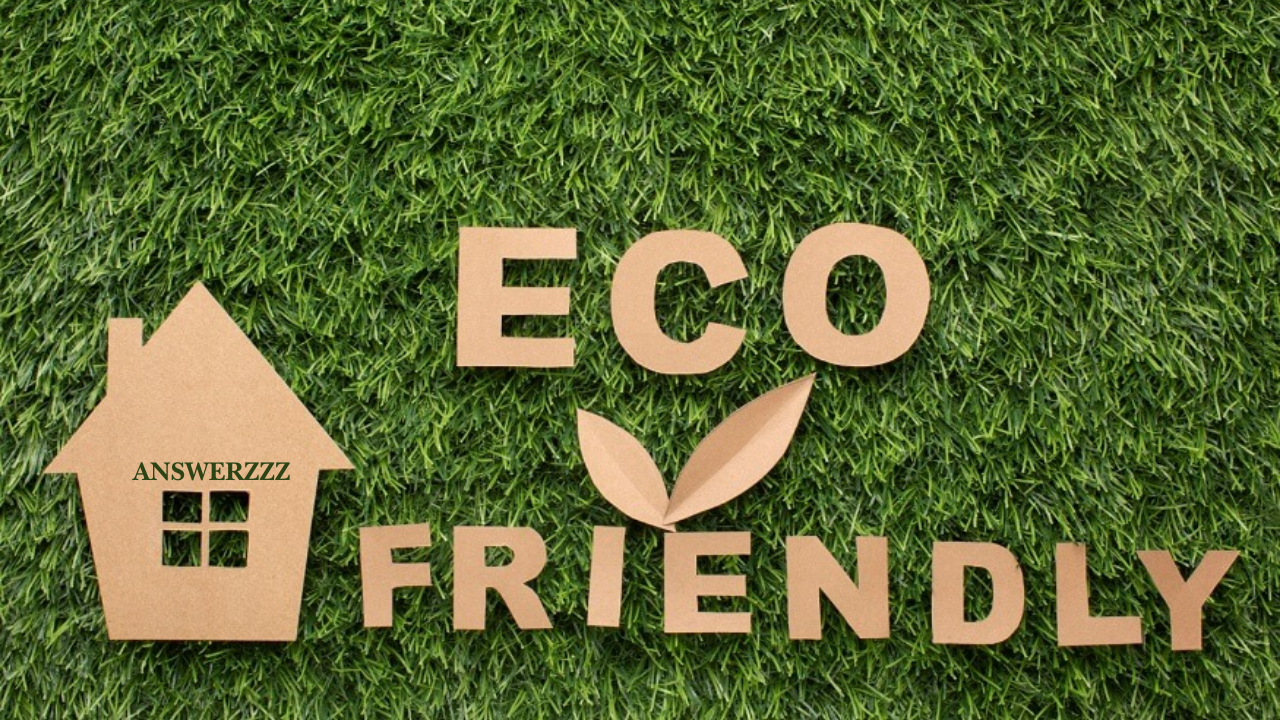As the world faces growing environmental challenges, there has never been a better time to adopt eco-friendly living practices. Sustainable living is not just a trend but a crucial necessity to combat climate change, reduce waste, and conserve resources for future generations. In 2025, sustainability will be more important than ever, but the good news is that many of the steps we need to take can be started today. Here’s a comprehensive guide to help you embrace a more eco-friendly lifestyle right now.
Why Eco-Friendly Living Matters

Sustainable living is the practice of making choices that reduce your impact on the planet. From the food we eat to the energy we consume, every decision we make can either harm or help the environment. According to a report by the United Nations, climate change is the greatest challenge facing humanity, and immediate action is required to mitigate its effects. By adopting eco-friendly habits, individuals can play a pivotal role in this global movement.
Incorporating sustainability into our everyday lives can help reduce our carbon footprint, minimize waste, preserve natural resources, and protect biodiversity. But how can we make a significant difference? The key lies in small, daily changes that, when combined, lead to lasting impact.
Sustainable Living Tips for 2025
1. Rethink Your Transportation Choices
One of the largest contributors to carbon emissions is transportation. In 2025, eco-friendly transportation options will be more widely accessible, but you don’t have to wait to make a change. Here are some steps you can take today to reduce your environmental footprint:
- Switch to an Electric Vehicle (EV): As electric vehicle technology improves, more affordable options are entering the market. EVs produce zero emissions and reduce reliance on fossil fuels.
- Carpool or Use Public Transportation: Reducing the number of cars on the road decreases air pollution. Carpooling, using buses, trains, or even biking can have a significant environmental impact.
- Opt for Shared Mobility Services: Services like bike-sharing and ride-sharing contribute to fewer vehicles on the road, which reduces congestion and pollution.
By using more eco-friendly forms of transportation, you help reduce carbon emissions and save money in the long run.
Top Nutrition Tips for Staying Energized and Focused in 2025
2. Energy Conservation at Home
The way we power our homes significantly affects the planet. In 2025, many advancements in renewable energy will likely be more accessible to homeowners. However, reducing your energy consumption is an immediate step toward living more sustainably.
- Switch to LED Lighting: LED bulbs are highly energy-efficient, lasting longer and consuming less energy than traditional incandescent bulbs.
- Invest in Solar Power: Installing solar panels on your roof is a great long-term investment that reduces dependence on fossil fuels. Many incentives exist to help make this more affordable.
- Seal Windows and Insulate Your Home: Proper insulation keeps heat inside in the winter and cool air in the summer, which means less reliance on energy-consuming heating and cooling systems.
- Unplug Devices When Not in Use: Electronics and chargers left plugged in still consume energy. Make it a habit to unplug devices or use a power strip to turn off multiple items at once.
3. Reduce, Reuse, Recycle
Waste management is another area where significant improvements can be made in everyday life. Landfills are a major source of pollution, and reducing the waste we generate is a crucial step toward sustainability.
- Buy Less, Choose Wisely: Avoid fast fashion and disposable products. Invest in quality items that last longer and are made from sustainable materials.
- Recycle Properly: Learn your local recycling rules and make sure you are recycling as much as possible. Paper, cardboard, glass, and plastics all have recyclable options that should be properly sorted.
- Compost Your Food Waste: Instead of throwing away food scraps, compost them. This reduces landfill waste and creates nutrient-rich soil for gardening.
- Avoid Single-Use Plastics: Single-use plastics, such as straws, plastic bags, and packaging, are incredibly harmful to the environment. Opt for reusable alternatives like cloth bags, stainless steel straws, and containers made from sustainable materials.
By making recycling and waste reduction part of your daily routine, you contribute to the health of the planet.
4. Sustainable Eating Habits
The food industry has a large environmental footprint, from the energy used in production to the waste generated. Sustainable eating is about making mindful food choices that minimize environmental harm.

- Eat More Plant-Based Foods: Animal agriculture is one of the leading contributors to greenhouse gas emissions. By reducing your consumption of meat and dairy, or switching to plant-based alternatives, you can reduce your carbon footprint.
- Support Local and Organic Agriculture: Local produce often has a smaller carbon footprint since it doesn’t have to travel long distances. Organic farming avoids harmful pesticides and encourages biodiversity.
- Minimize Food Waste: Plan meals ahead of time, store food properly, and use leftovers creatively to reduce food waste. Compost food scraps to avoid sending them to landfills.
By making more sustainable food choices, you help reduce the environmental impact of food production.
5. Water Conservation
Water is a precious resource, and conserving it should be a top priority in every home. Here are a few steps to conserve water effectively:
- Fix Leaks Immediately: A leaky faucet may seem like a minor inconvenience, but it can waste a significant amount of water over time.
- Install Water-Efficient Fixtures: Low-flow showerheads, faucets, and toilets use less water while maintaining functionality.
- Use Water-Efficient Appliances: Dishwashers and washing machines that use less water are more eco-friendly and cost-effective.
- Practice Mindful Water Usage: Be conscious of how long you leave the water running. Turn off the faucet when brushing your teeth or washing dishes.
Conserving water reduces the energy used to pump, heat, and treat water, which in turn helps the environment.
6. Eco-Friendly Home Improvements
Making your home more eco-friendly is not just about energy efficiency but also about using sustainable materials and reducing your environmental footprint.
- Use Sustainable Materials: When renovating or building, choose eco-friendly materials such as bamboo flooring, reclaimed wood, and non-toxic paints.
- Green Your Roof: Green roofs or rooftop gardens help reduce urban heat islands, absorb rainwater, and provide insulation for your home.
- Create a Garden or Green Space: Grow your vegetables and herbs to reduce the need for store-bought produce. This helps reduce your food’s carbon footprint and encourages biodiversity in your yard.
By making your home more sustainable, you contribute to a healthier, more eco-conscious living space.
7. Support Eco-Friendly Companies
The businesses we support play a major role in driving sustainability. Many companies are making efforts to reduce their environmental impact and create more sustainable products.
- Buy from Sustainable Brands: Look for companies that use eco-friendly materials, reduce waste, and commit to ethical production practices.
- Choose Secondhand Goods: Purchasing used items reduces the demand for new products and prevents perfectly good items from ending up in landfills.
- Support Local Businesses: Local businesses tend to have a smaller carbon footprint because their supply chains are shorter, and they often prioritize sustainable practices.
By supporting sustainable businesses, you help create demand for eco-friendly products and practices.
8. Eco-Friendly Fashion Choices
The fashion industry is one of the largest polluters in the world, contributing to waste, pollution, and exploitation. Sustainable fashion is about making conscious choices that reduce the environmental impact of clothing.
- Opt for Quality Over Quantity: Instead of constantly buying fast fashion, invest in high-quality, timeless pieces that will last longer.
- Choose Sustainable Fabrics: Look for clothing made from natural fibers like organic cotton, hemp, and bamboo, or recycled materials that have a lower environmental impact.
- Buy Secondhand or Vintage: Thrift stores, consignment shops, and online secondhand marketplaces are great places to find unique and sustainable fashion options.
- Repair and Recycle Clothes: If something breaks or gets worn out, consider repairing it rather than throwing it away. Many clothes can be upcycled into new items or recycled.
By embracing sustainable fashion, you help reduce waste and encourage the fashion industry to adopt greener practices.
A Greener Tomorrow Starts Today
Adopting an eco-friendly lifestyle may seem overwhelming, but by taking small steps today, you can make a big difference in the future. From energy conservation and sustainable eating habits to waste reduction and eco-friendly fashion choices, there are countless ways to live more sustainably. By making these changes, you not only reduce your environmental footprint but also encourage others to do the same.

2025 may be just around the corner, but we have the power to start making a difference today. Every action, no matter how small, contributes to a larger global movement toward a more sustainable and eco-friendly future. So, take the first step today—because the earth’s future is in our hands.



